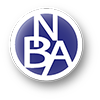Hi Hollie!
You ask a very good question! Pie charts (circle graphs) and fraction models share distinct similarities.
However, as your question implies, the purposes of pie charts and fraction models are different enough to warrant different treatments. Fraction models are used to help a pupil learn the concept of fractions. Pie charts communicate percentage quantities of different categories in some set.
Our experts point to these differences when advising how we should prepare tactile graphics for each type.
Fraction models use shading inside one fractional element in a shape to highlight the fraction that is being communicated. Your examples display this with color, and a tactile graphic would use texture. We are attaching a set of fraction models that display how the texture would be applied inside a fraction model. Note how the texture stops short of the circumference and the interior spoke lines. This is to ensure that those lines are clear and distinct for the reader.
Pie charts communicate the percentage of different categories in a set. The number and percent sign are critical parts of the pie chart. As described in GSTG 6.3, those numbers and symbols go <u>outside</u> the circle. 6.3.8 indicates that it is "not necessary" to show shading in a pie chart.
Significantly, our experts advise that one should seriously consider <u>not including shading</u> so we don't obscure the interior spoke lines between segments. Additionally, textures and a key to the textures adds another bunch of details the reader has to work with. If we leave the lines clear and distinct and do not include textures, the reader has direct access to the graphic <u>and</u> numeric information in the pie chart.
We know that we didn't answer your question about BANA's intent, but we think our response gets to the issues that you are asking about. Please let us know if this helps you complete the project.
Attachments:
You must be
logged in to view attached files.
